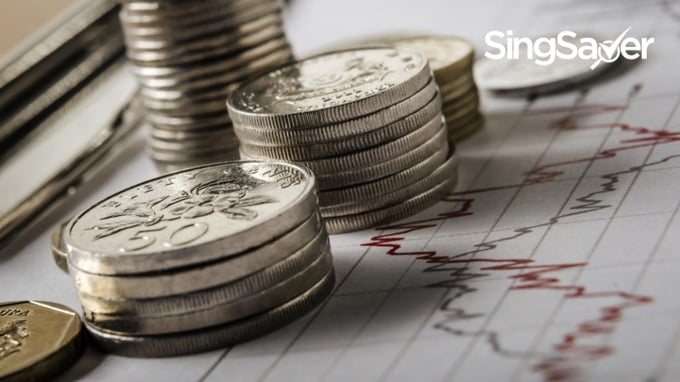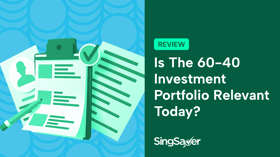Low interest rates are here to stay. For the time being, at least. Here’s what you need to know about interest rates and how you can make the most of it.
As we are mired in one of the worst recessions in history (from Singapore to as far reaching as the U.S.A), interest rates are likely to remain low for some time. On 10 June 2020, the Federal Reserve (also known as the Fed) shared that the interest rates will stay near zero through 2022 to help the economy recover from the COVID-19 pandemic.
In the interest of your fiscal well-being, here’s what you need to know about interest rates, what affects them and how you can make the most of low interest rates to save money.
- Singapore’s key interest rate benchmarks
- Understanding the highs and lows of interest rates
- Why and how interest rates matter to you
- What you should do once you see low interest rates
The underlying factors that affect interest rates
Interest rates are determined by central banks and fluctuate depending on the economic situation. Interest rates can help to stimulate the economy by encouraging borrowing and increasing liquidity in the markets.
When interest rates are high: This is when loans become more expensive, and fewer consumers and businesses can afford to borrow. Rather than taking on more debt, saving money is encouraged and interest rates for savings accounts tend to increase.
When interest rates are low: This is when loans become more affordable and encourage borrowing among consumers and businesses. This helps to drive the growth of businesses and the demand for housing. This also helps to channel more money into the markets.
With people being forced to stay at home due to COVID-19, consumer spending has plummeted. As a result, central banks around the world have eased monetary policy to help support the economy, since low interest rates drive economic growth.
For example, in March 2020, the Fed slashed U.S. interest rates close to zero to help alleviate the economic impact of COVID-19.
Singapore’s key interest rate benchmarks
In Singapore, these are the key interest rate benchmarks for financial products.
- Singapore Interbank Offered Rate (SIBOR): The SIBOR is the median rate at which Singapore banks lend money. Most home loans are pegged to the SIBOR, except for fixed home loan rates.
- Singapore Dollar Swap Offer Rate (SOR): SOR is currently a key benchmark for interest rates in Singapore. SOR is determined based on the exchange rate between the Singapore dollar and the U.S. dollar (USD), relying on the USD London Inter-bank Offered Rate (Libor). Singapore will transition from SOR to SORA by end 2021, due to a discontinuation of the USD Libor.
- Singapore Overnight Average Rate (SORA): SORA is the average rate of unsecured overnight interbank SGD transactions brokered in Singapore. SORA will be the new interest rate benchmark for the SGD cash and derivatives market. OCBC has just taken the first step to transition to SORA through a $150 million loan with this new benchmark, making it Singapore’s first SORA-pegged loan.
Understanding the highs and lows of interest rates
How high or how low can interest rates get?
Loans with low interest rates (1-3%): Home loans, education loans, car loans. Considered as good debt because of their low interest rates, these loans are available to individuals for those specific purposes.
Loans with mid-range interest rates (4-9%): Personal loans, debt consolidation plans. Personal loans, while not the cheapest loans around, can come in handy during unexpected times. They can also help to pay off high interest rate debts.
Currently, the Standard Chartered CashOne personal loan is offering a flat 3.48% p.a. interest rate (EIR 7.99%).
High interest rates (10% or more): Credit cards. Credit cards are notorious for their sky-high interest rate costs. If you miss the payment of your credit cards, you will be charged a late payment fee. You will also incur interest rates that average between 25 and 27% p.a.
Why interest rates matter (and they do matter to you, eventually)
a) You could very well score big time savings on big ticket loans
When you take up a loan with the bank or any other financial institution, you will have to pay interest on the money that you borrow. The lower the interest rate, the less you end up paying in interest.
Here’s an example using the CPF monthly instalment calculator:
| Home Loan A | Home Loan B | |
| Loan amount | $400,000 | $400,000 |
| Loan repayment period (years) | 20 years | 20 years |
| Interest rate | 2.6% p.a. | 1.8% p.a. |
| Estimated monthly instalment | $2,139 | $1,986 |
| Total repayment amount | $513,360 | $476,640 |
| How much you pay in interest | $113,360 | $76,640 |
That’s a difference of $36,720 in interest. For the same loan amount and loan period, opting for a cheaper home loan can save you a significant amount of money almost enough for a downpayment for another house.
When you compare interest rates offered for loans, you also have to look beyond the advertised interest rates and consider the effective interest rate (EIR). EIR refers to the interest rate you actually end up paying. The EIR is often higher than the marketed interest rate because you incur other costs such as transaction costs, administrative fees and other costs that add to the final amount you pay.
b) It helps decide which savings or deposit account to maximise savings
High yield savings accounts encourage you to keep your money with the bank, to earn interest rates of about 2%. However, savings account interest rates are also influenced by economic outlook.
In June 2020, Standard Chartered announced changes to the interest rates for their JumpStart account, lowering the current 2% p.a. earned for your first $20,000 to 1% p.a. from 1 July 2020 onwards.
CIMB will also be lowering the 1% p.a. earned on your first $50,000 in the FastSaver account to 0.5% from 15 July. This means that for the same amount of savings in those accounts, you will be earning less in interest.
What you should do once you see low interest rates
a) Refinance your home loan
Why pay more when you can pay less?
More homeowners are refinancing their home loans, as banks' interest rates for floating home loans are at their lowest in recent years. This June 2020, the three-month Sibor is around 0.56%, far lower than the 2% in May 2019. The time when interest rates are low is the optimal time to refinance existing loans.
Refinancing involves taking up a new loan to replace your existing loan. This is usually done to shift from a loan that charges higher interest rates to one with lower interest rates, thereby saving interest costs. You can refinance with the same bank or with a different bank.
For example, DBS is currently offering 1.5% p.a. for a five year fixed rate package. You enjoy 1.5% p.a. for the first five years, followed by Fixed Deposits Home Rate (FHR24) + 0.90% p.a. for the years after that. This is far lower than a HDB loan that incurs 2.6% p.a. interest.
b) Invest your savings instead of keeping it in a bank account
Even though cash is king during uncertain times, the opportunity cost of keeping your cash in savings accounts increases when banks lower their interest rates. Earning 0.5% to 1% in interest, or anything less than 2% for that matter, will easily be eroded by inflation. Many of these high yield savings accounts also require you to jump through hoops to earn the interest; some of said hoops include crediting your salary, spending on your credit card, taking a loan and purchasing insurance.
Your money could be better off elsewhere, such as in this Singlife account that earns up to 2.5% p.a, or channeled towards investments in stocks, bonds, exchange traded funds (ETFs) and unit trusts. Many of these investments require you to stay invested for a longer period of time, in order to ride out market volatility and compound your interest. For example, investing in the S&P500 in the long run can reap returns of about 9%. You can also top up your CPF SA to earn a guaranteed return of 4% p.a.
Some investors could also consider leverage to boost investment returns, an option that comes with high risk. Do read the pros and cons of taking on debt to invest before you do so.
All in all, a low interest rate environment reflects a bad time for the economy, but possibly a golden opportunity for those with an expensive home loan or have the financial ability to invest.
Read these next:
What Is The Effective Interest Rate (EIR) In A Loan?
HDB Loan Vs Bank Loan: Which One Should You go For?
Understanding Personal Loans: Why And When Should You Use It?
What Should You Do If You Can’t Pay Your Credit Card Bill?
Best Bank Loans You Can Apply For Under Each Loan Type In Singapore (2020)
Similar articles
The When And How Of Refinancing Your Home Loan
Rising Interest Rates And The Effect On Mortgage Debt In Singapore
SORA, Not SIBOR, Could Be The New Norm For Housing Loans In Singapore
What Is A SORA-Based Home Loan And How Does It Work?
How Will Rising Housing Loan Interest Rates in Singapore Impact You?
Mortgage Rates in Singapore are on the Rise. Here’s How Homeowners Can Save
Another One Bites The Dust: Major Savings Accounts Further Slash Interest Rates For 2021
Money Mysteries: Why are HDB Loans More Expensive than Bank Loans?










